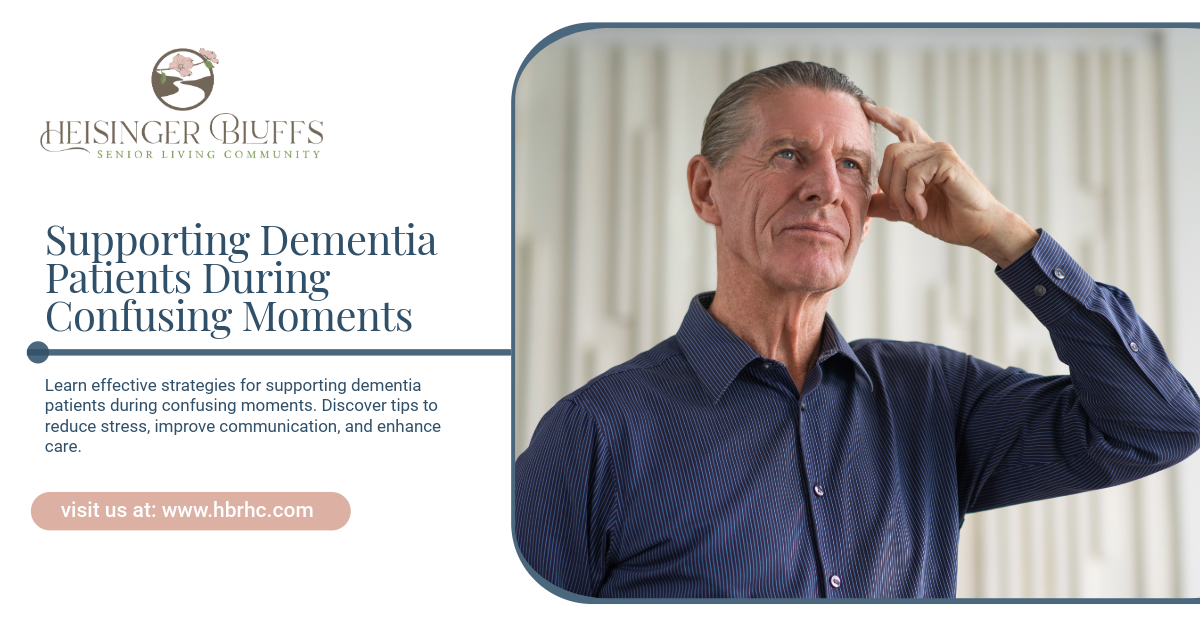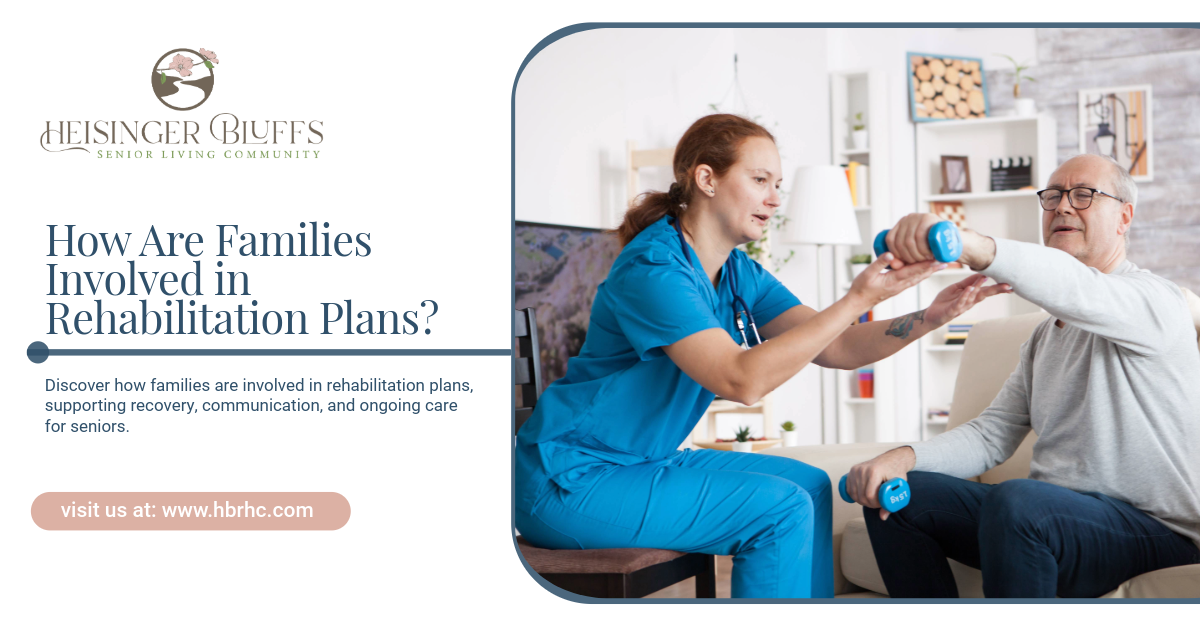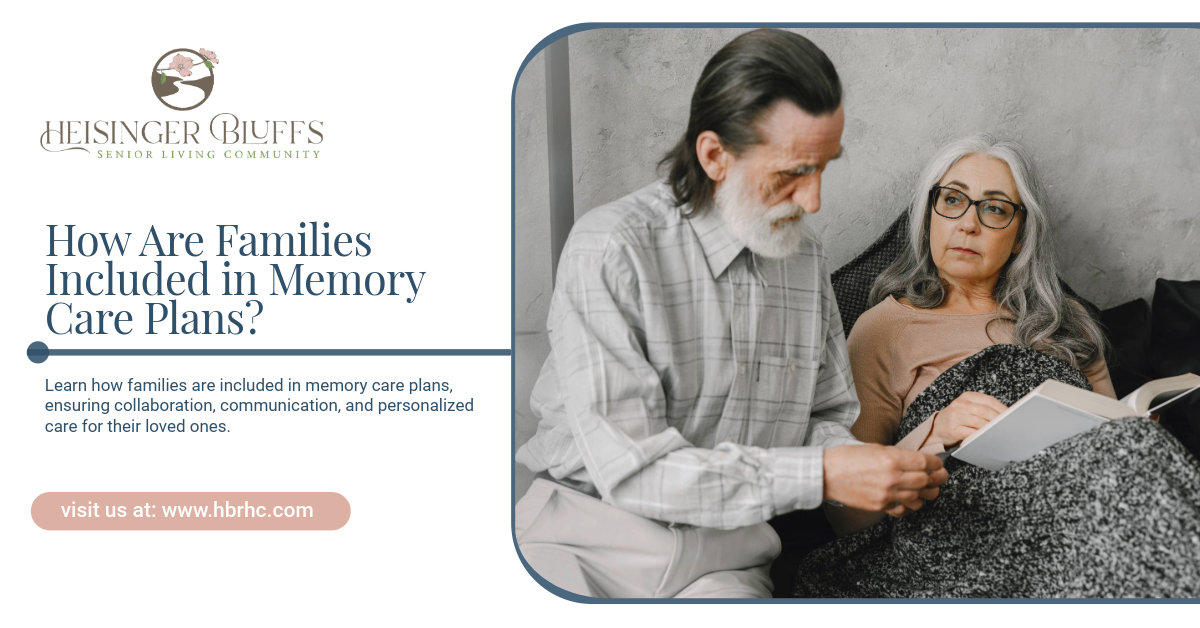Supporting Dementia Patients During Confusing Moments

Key Highlights:
- Confusion is a common symptom of dementia that can lead to frustration and agitation.
- Calm, patient communication helps dementia patients feel safe and understood.
- Structured routines and familiar environments reduce moments of confusion.
- Sensory and memory cues, like music or photos, aid in orientation.
- Professional care and support systems enhance both patient and caregiver well-being.
Dementia affects memory, thinking, and behavior, making confusing moments a frequent challenge for patients and caregivers alike. During these times, seniors may feel anxious, frustrated, or even fearful, which can escalate stress for both themselves and those providing care.
Supporting dementia patients during these moments requires patience, understanding, and practical strategies designed to maintain dignity, safety, and emotional well-being. This guide explores effective ways to manage confusion, improve communication, and create a supportive environment for dementia patients.
Understanding Confusion in Dementia
Confusion in dementia can manifest as:
- Difficulty recognizing familiar faces or places
- Forgetting daily routines or appointments
- Misplacing objects or losing track of time
- Mood swings, agitation, or anxiety
These moments are often temporary but can be intense. Recognizing triggers—such as fatigue, hunger, medication changes, or overstimulation—helps caregivers prevent or reduce episodes.
Tip: Responding with patience and empathy is more effective than correcting or arguing with the patient.
Communicate Calmly and Clearly
Effective communication is crucial during confusing moments. Seniors with dementia may struggle to process information quickly, so caregivers should adjust their approach:
- Use simple language: Short sentences and familiar words are easier to understand.
- Speak slowly and clearly: Allow time for the patient to process and respond.
- Maintain eye contact: Shows attention and reassurance.
- Use nonverbal cues: Gestures, touch, and facial expressions can reinforce understanding.
- Validate emotions: Acknowledge feelings rather than focusing solely on correcting errors.
Example: Instead of saying, “You’ve already eaten breakfast,” try, “I understand you’re hungry. Let’s have breakfast together.”
Create a Structured Routine
Predictable routines reduce confusion and anxiety by providing consistency:
- Daily schedules: Fixed times for meals, activities, and rest help patients anticipate what comes next.
- Visual cues: Calendars, clocks, and labeled spaces reinforce orientation.
- Step-by-step guidance: Break tasks into simple steps to support independence.
Tip: Avoid abrupt changes to routines, as unexpected events can trigger disorientation.
Make the Environment Familiar and Safe
A dementia-friendly environment reduces stress and confusion:
- Consistent living space: Keep furniture and personal items in familiar locations.
- Clear pathways: Reduce clutter to prevent accidents.
- Adequate lighting: Well-lit areas prevent misperceptions and falls.
- Comforting sensory items: Favorite music, photos, or scents can help patients feel secure.
Environmental Strategies to Reduce Confusion
| Strategy | Purpose | Example Use |
|---|---|---|
| Consistent layout | Familiarity and orientation | Keep bedroom furniture in the same positions |
| Memory cues | Reinforces identity and memories | Display family photos in living areas |
| Safe spaces | Reduces anxiety and risk of accidents | Remove obstacles, secure rugs and cords |
| Soothing sensory elements | Calms agitation and stress | Play favorite music, provide soft blankets |
| Visual reminders | Supports independence and daily tasks | Use labels for doors, drawers, and items |
Use Memory and Sensory Cues
Memory triggers and sensory cues can help orient dementia patients:
- Photos of family and friends: Aid recognition and conversation.
- Familiar music: Can evoke positive memories and calm agitation.
- Scented items: Certain smells, like baking bread or lavender, may comfort and soothe.
- Labels and signs: Help patients locate rooms or personal belongings.
Tip: Avoid overwhelming multiple cues at once; simplicity is key.
Respond to Agitation and Emotional Upset
During confusing moments, agitation or distress is common. Caregivers can use calming techniques:
- Stay calm: Your demeanor influences the patient’s response.
- Redirect attention: Gently shift focus to a favorite activity or conversation.
- Offer reassurance: Use comforting words and touch if appropriate.
- Maintain safety: Ensure the environment is secure if the patient becomes restless or disoriented.
Tip: Avoid arguing or correcting; instead, validate emotions and offer gentle guidance.
Encourage Social Engagement
Social interactions reduce feelings of isolation and support emotional wellness:
- Family visits and phone calls: Provide familiarity and reassurance.
- Group activities: Art, music, or gentle exercise classes encourage participation.
- Reminiscence therapy: Discussing past experiences can stimulate memory and conversation.
Tip: Engage patients in activities they enjoy, adjusting complexity to their cognitive abilities.
Incorporate Therapeutic Activities
Purposeful activities can calm and engage dementia patients during confusing moments:
- Art and crafts: Provide sensory engagement and creative expression.
- Puzzles and memory games: Stimulate cognition without causing frustration.
- Gardening or nature walks: Promote relaxation and well-being.
- Music or dance therapy: Improves mood and cognitive function.
Tip: Keep activities structured but flexible, allowing seniors to participate at their own pace.
Support Nutrition and Hydration
Proper nutrition and hydration influence mental clarity and mood:
- Regular meals and snacks: Prevent fatigue and irritability.
- Hydration reminders: Dehydration can worsen confusion.
- Balanced diet: Include fruits, vegetables, lean proteins, and whole grains.
- Familiar foods: Comfort foods can evoke positive emotions.
Caregiver Support and Education
Caring for dementia patients can be stressful. Caregivers benefit from guidance and support:
- Training programs: Learn strategies for managing confusion and agitation.
- Support groups: Share experiences and coping tips.
- Respite care: Allows caregivers to rest and prevent burnout.
- Professional advice: Occupational therapists or dementia specialists can tailor strategies for individual needs.
Tip: Well-supported caregivers provide higher-quality care, benefiting both the patient and themselves.
Final Thoughts
Supporting dementia patients during confusing moments requires patience, empathy, and consistent strategies. By focusing on clear communication, structured routines, familiar environments, and meaningful engagement, caregivers can reduce stress and improve the quality of life for those living with dementia.
For seniors needing dedicated support, Heisinger Bluffs provides specialized care tailored to emotional and cognitive needs, ensuring safety and comfort at every stage. Reach out today!
Frequently Asked Questions
How can I quickly calm a dementia patient during a confusing moment?
Speak calmly, use gentle touch if appropriate, redirect attention to a familiar activity, and validate their feelings.
Are routines really effective for dementia patients?
Yes. Consistent daily routines reduce anxiety, improve orientation, and help patients feel secure.
What types of activities work best for dementia patients?
Simple, familiar, and engaging activities like art, music, memory games, and gentle exercise are most effective.
How can caregivers prevent confusion from escalating?
Identify triggers, maintain structured routines, use memory cues, and remain calm and patient during disorienting moments.
When should professional help be sought?
If episodes of confusion become frequent, dangerous, or highly distressing, consult healthcare professionals or dementia care specialists for guidance.
Sources:
- https://www.nhs.uk/conditions/dementia/about-dementia/causes/
- https://www.nia.nih.gov/health/alzheimers-changes-behavior-and-communication/coping-agitation-aggression-and-sundowning
- https://www.nia.nih.gov/health/loneliness-and-social-isolation/loneliness-and-social-isolation-tips-staying-connected
- https://medlineplus.gov/nutritionforolderadults.html











